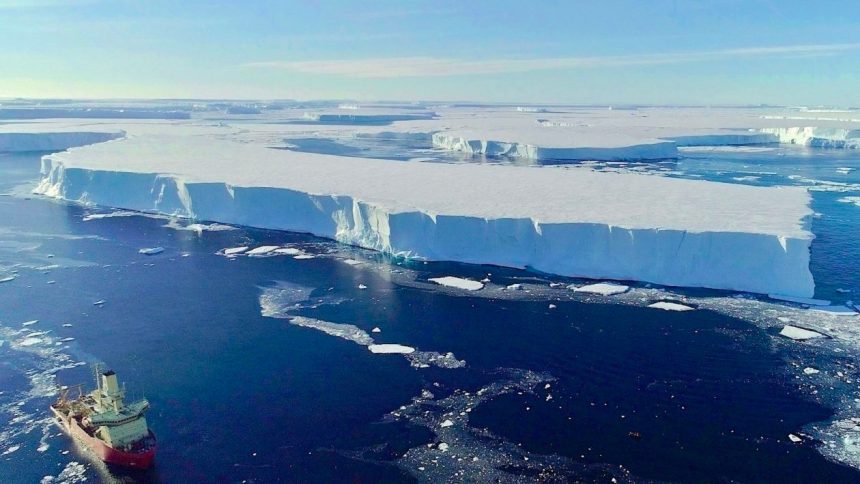This story was originally published by Yale E360 and is reproduced here as part of the Climate Desk collaboration. They call it the Doomsday Glacier. A chunk of Antarctic ice as big as Florida and two thirds of a mile thick, the Thwaites Glacier disgorges into the ocean in a remote region of West Antarctica. Glaciologists say it may be on the verge of total collapse, which could swamp huge areas of low-lying coastal land around the world within a few decades. Now, ambitious plans to save it are set to become an early test of whether the world is prepared to enact massive geo-engineering efforts to ward off the worst effects of climate change. Recent monitoring by uncrewed submarines and satellites, along with ice-sheet modeling, suggest that the Thwaites Glacier and its adjacent smaller twin, the Pine Island Glacier, may already be in a death spiral — eaten up by the intensifying speed and warmth of the powerful Antarctic Circumpolar Current. If they are past a point of no return, say researchers involved in the studies, then only massive human intervention can save them. Nothing is certain. A new modeling study published last week said the risk of unstoppable retreat of the glacier may be overblown. But there is no time to waste, argues the glaciologist orchestrating the call for action, John Moore of Lapland University, in northern Finland. Within two years, he and colleagues in Europe hope to be working in a Norwegian fjord, testing prototypes for a giant submarine curtain, up to 50 miles across, that could seal off the two glaciers from the remorseless Antarctic current. Meanwhile, some of his collaborators, fearing the logistical complications of such a task, are pondering an even more mind-bending idea. They want to substitute the physical curtain with a giant “bubble curtain,” created by a constant injection of bubbles of air or cold surface water. Opponents of the plans, including many glaciologists, say such outlandish proposals are a dangerous diversion from the real task of mitigating climate change by curbing carbon emissions. But advocates say the two glaciers can’t wait. “We can’t mitigate our way out of this,” says Moore. “We need other tools.”
Glaciologists have discussed scary prognoses for the rapid collapse of giant Antarctic glaciers for almost half a century. Glaciers in West Antarctica are particularly vulnerable because they are not sitting on solid land; they are surrounded by ocean and pinned precariously……cont.






